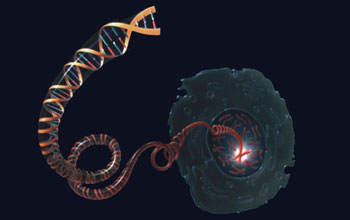 |
| A drawing depicting a DNA molecule unwinding from a chromosome inside the nucleus of a cell. Credit: The Cancer Genome Atlas |
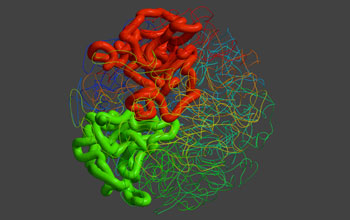 |
| The 3-D structure of the human genome is shown in a stretch of DNA inside a fractal globule. Credit: X. Robert Bao, Leonid A. Mimy and Maxim Imakaev |
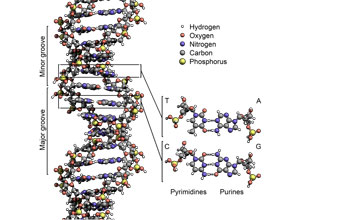 |
| DNA showing four bases: adenine; cytosine; guanine; thymine. Also major/minor groove. Credit: Wikimedia Commons |
|
||
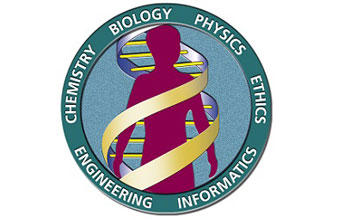 |
| Scientists used data available from the Human Genome Project and others in their study. Credit: Human Genome Project |
Bacterial DNA may integrate into the human genome more readily in tumors than in normal human tissue, scientists have found.
The
researchers, affiliated with the University of Maryland School of
Medicine's Institute for Genome Sciences, analyzed genomic sequencing
data available from the Human Genome Project, the 1,000 Genomes Project
and The Cancer Genome Atlas.
They considered the phenomenon of
lateral gene transfer (LGT), the transmission of genetic material
between organisms in a manner other than than traditional reproduction.
Scientists have already shown that bacteria can transfer DNA to the genome of an animal.
The
researchers found evidence that lateral gene transfer is possible from
bacteria to the cells of the human body, known as human somatic cells.
They
found that bacterial DNA was more likely to integrate in the genome in
tumor samples than in normal, healthy somatic cells. The phenomenon
might play a role in cancer and other diseases associated with DNA
damage.
"Advances in genomic and computational sciences are
revealing the vast ways in which humans interact with an ever-present
and endlessly diverse planet of microbes," says Matt Kane, program
director in the National Science Foundation's Division of Environmental
Biology in its Directorate for Biological Sciences, which funded the
research.
"This discovery underscores the benefits that can result
from a shift in our understanding of how this vast diversity of
microbes and their genes may affect our health."
The results may
lead to advances in personalized medicine, scientists say, in which
doctors use each patient's genomic make-up to determine care and
preventive measures.
A paper reporting the results is published today in the journal PLOS Computational Biology.
"LGT
from bacteria to animals was only described recently, and it is
exciting to find that such transfers can be found in the genome of human
somatic cells and particularly in cancer genomes," says Julie Dunning
Hotopp of the University of Maryland School of Medicine and lead author
of the paper.
Hotopp also is a research scientist at the University of Maryland Marlene and Stewart Greenebaum Cancer Center.
"Studies
applying this approach to additional cancer genome projects could be
fruitful, leading us to a better understanding of the mechanisms of
cancer."
The researchers found that while only 63.5 percent of
TCGA samples analyzed were from tumors, the tumor samples contained 99.9
percent of reads supporting bacterial integration.
The data
present a compelling case that LGT occurs in the human somatic genome,
and that it could have an important role in cancer and other human
diseases associated with mutations.
It's possible that LGT
mutations play a role in carcinogenesis, the scientists say, yet it's
also possible that they could simply be "passenger mutations."
The
investigators suggest several competing ideas to explain the results,
though more research is needed for definitive answers.
One possibility is that the mutations are part of carcinogenesis, the process by which normal cells turn into cancer cells.
Alternatively,
tumor cells are very rapidly proliferating, so much so that they may be
more permissive to lateral gene transfer.
It's also possible that bacteria are causing these mutations because they benefit the bacteria themselves.
The study was also funded by the National Institutes of Health.
-NSF-
Media Contacts
Cheryl Dybas, NSF (703) 292-7734
cdybas@nsf.gov
Sarah Pick, University of Maryland (410) 707-2543
Sarah Pick, University of Maryland (410) 707-2543
The National Science Foundation (NSF) is an independent federal
agency that supports fundamental research and education across all
fields of science and engineering. In fiscal year (FY) 2012, its budget
was $7.0 billion. NSF funds reach all 50 states through grants to nearly
2,000 colleges, universities and other institutions. Each year, NSF
receives about 50,000 competitive requests for funding, and makes about
11,500 new funding awards. NSF also awards about $593 million in
professional and service contracts yearly.
Useful NSF Web Sites:
NSF Home Page:
NSF Home Page:
http://www.nsf.gov
NSF News:
NSF News:
http://www.nsf.gov/news/
For the News Media:
For the News Media:
http://www.nsf.gov/news/newsroom.jsp
Science and Engineering Statistics:
Science and Engineering Statistics:
http://www.nsf.gov/statistics/
Awards Searches:
Awards Searches:
The National Science Foundation (NSF).-
Guillermo Gonzalo Sánchez Achutegui
ayabaca@gmail.com
ayabaca@hotmail.com
ayabaca@yahoo.com
Inscríbete en el Foro del blog y participa : A Vuelo De Un Quinde - El Foro!
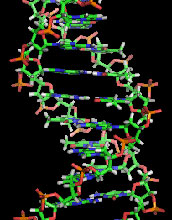

No hay comentarios:
Publicar un comentario